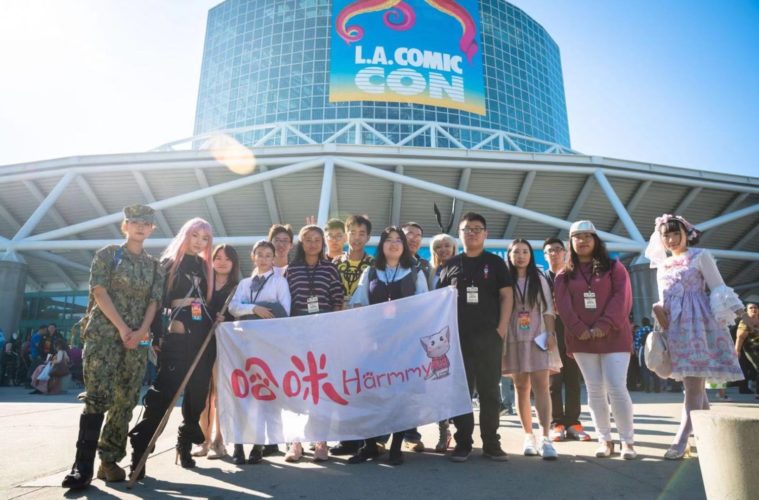As an anime enthusiast, creating anime statues has long been my passion. Along with other hobbyists and anime fans, we’ve transformed our love for anime into something bigger – Harmmy Anime. We now have a Harmmy Anime store featuring collectible anime statues – but it’s more than just a store, it’s an emblem of a community of anime fans globally and locally that have found a place to connect and celebrate anime and the craft around collectible statues.
Like any large venture, this didn’t happen overnight. Here’s our journey.
The Origin of Harmmy Anime
Harmmy Anime was founded in 2018 as an anime club organized by me and a group of anime fans in Los Angeles. We held various anime-related events, and in the same year, I created the first anime-themed Chinese traditional hotpot restaurant in Los Angeles – creating a mecca for anime fans in Los Angeles to gather and celebrate our love of the craft.
When the pandemic hit in 2020 and we had to lockdown, we transformed Harmmy Anime into an online business. We collaborated with many manufacturers and studios to become the agent of handicraft anime statues in North America.
The following year I decided to take our love for anime offline and back to the real world again. After much deliberation, we decided to promote the statue craft in the United States and opened the first physical Harmmy Anime statue store at the Westfield Santa Anita in Arcadia, which became an Instagram-worthy destination for anime lovers.
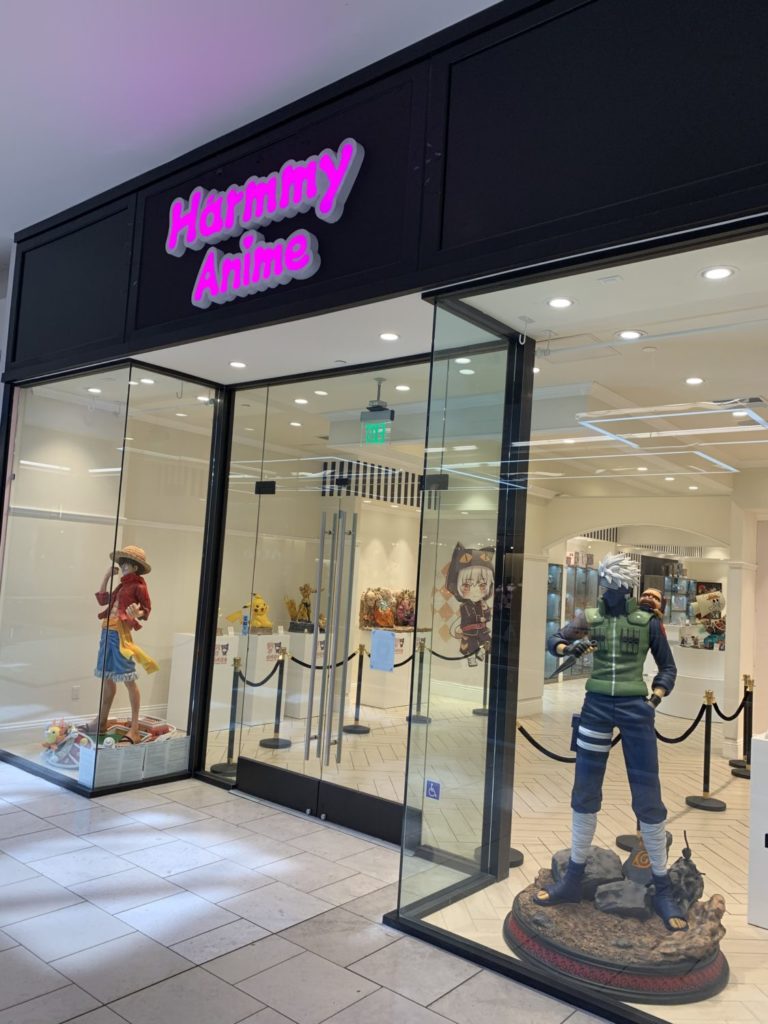
We held statue exhibitions at the store with collectible studios Jimei, TriEagles Studio, and others. Our promotion of statue culture received lots of positive feedback from collectors.
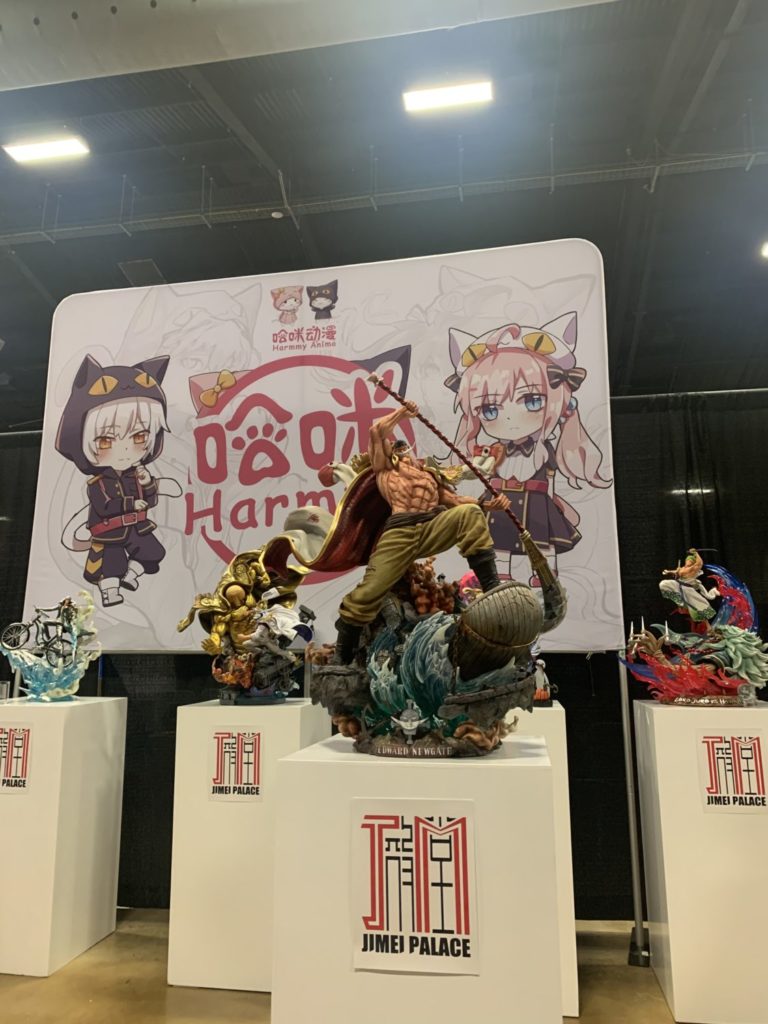
Photo by Harry Song
In 2022, we partnered with blogger Mr. Unicorn to create a series of videos and live-streams to promote the authentic Chinese-style statues. This led to us working with Chinese original studios and we became dedicated to bringing Chinese originals to the U.S.
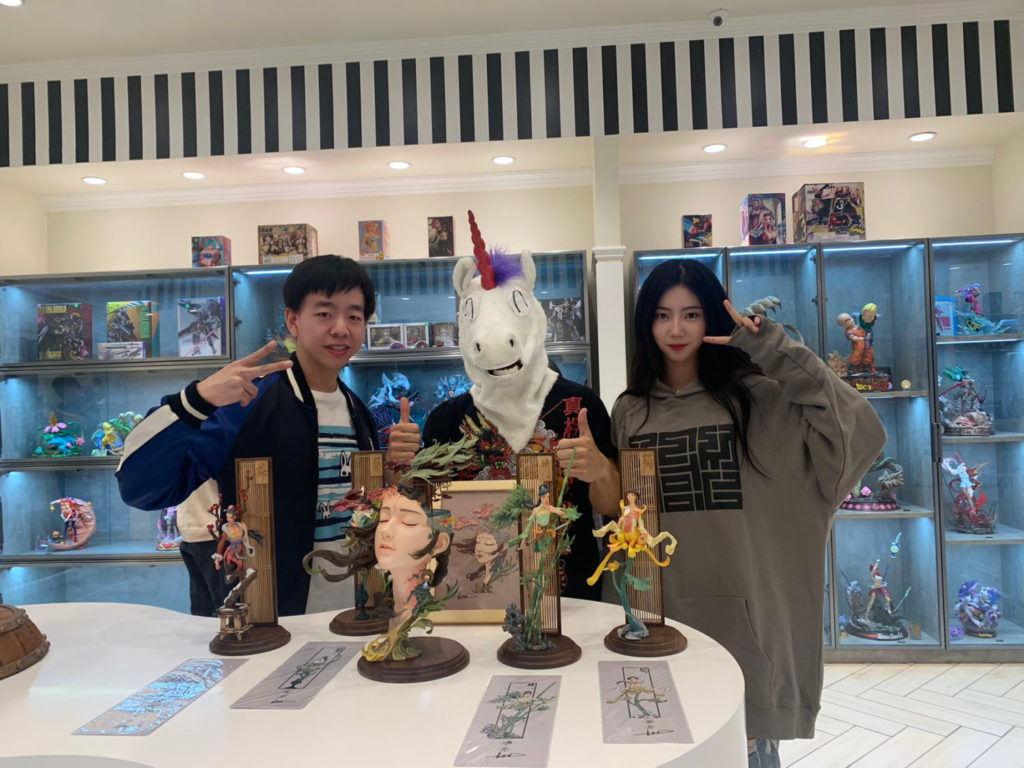
Photo by Harry Song
A partnership with blogger Miss Red led to us creating the first statue and board game store in Los Angeles, offering fans the opportunity to enjoy a great number of statues when playing the games.
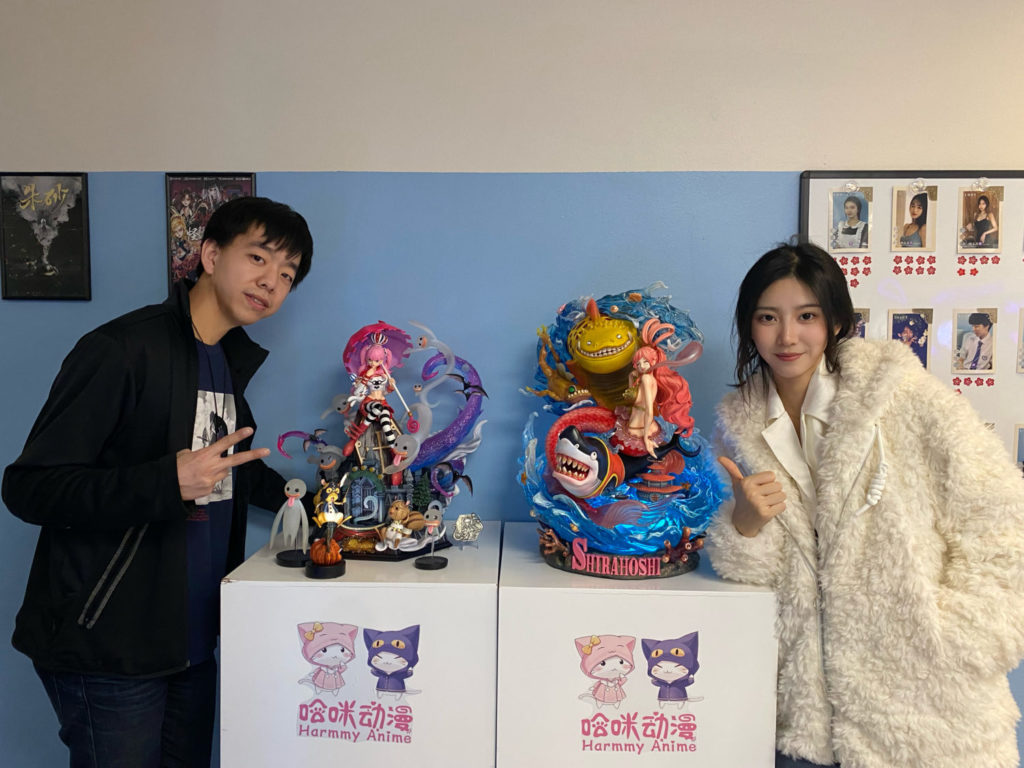
Photo by Harry Song
How the Statues Are Made
Creating these elaborate statues is no easy feat – each one is an individual work of art that requires many steps of design and production to transform a flat figure into a fan favorite collectible.
In step one, an artist transforms a character concept into a two-dimensional first draft, then draws multiple revisions to complete the initial design.
Then, in step two, a 3-D model based on the drawing is created as the printing template. Then a skilled modeler splits the model into several parts and uses the disassembled model as a sample to make modifications to ensure the model is functional and can be built – this process takes roughly two months. Once this prototype is finalized, all parts will be polished, modified, sprayed with basic colors and assembled.
In the third step, the artist paints the model to match the original art, completing a sample and mold.
Finally, we are ready for pre-sale and packaging publicity. Once complete, the product will be ready for the mass-production phase at last.
As you can see, a good statue has to go through a long and careful production cycle with many people involved before it becomes the final product, ready to be delivered to a collector.
Where did this appreciation for statues come from?
The desire for these statues comes from the early years of anime, as fans wanted a physical memento of their favorite anime characters and scenes. But since the statues were not officially produced yet, the fans took it upon themselves to work with art and sculpture enthusiasts to make the desired characters DIY-style.
Once other players saw the original statues, they wanted them too and demand grew. The only problem was the small-studio production process made mass production hard. So the players took matters into their own hands and found factories that could make original productions, thus slowly forming an industry production chain.
The population of statue players gradually grew – from China to Southeast Asia, and then into Europe and the United States.
With the increasing number of players, more and more teams and designers became involved in the industry, contributing to a rapid industry development and a sophistication of product technology.
Those studios then attracted the attention of the official copyright owners and earned authorization to produce the statues.
The charm of the statues is that each one of them is hand-finished, making their significance and value higher than similar mass-produced products.
The number of studios on the market committed to the development of IP loved by players is growing. For example, the One Piece and Naruto series developed by Jimei Studio and the Ghost Blade series developed by TES Studio have received mass acclaim from players at home and abroad.
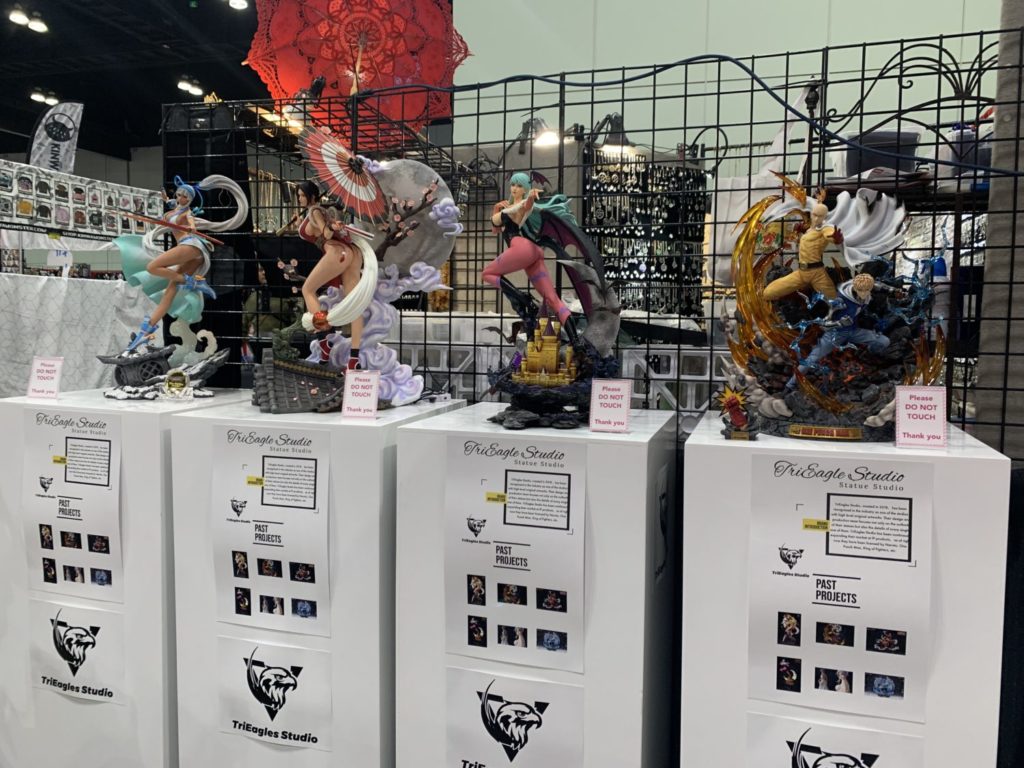
Photo by Harry Song
In addition, some excellent production teams have begun to combine traditional Chinese culture with the art of statues, and have created a number of excellent statues imbued with Chinese traditional culture.
The journey to build Harmmy Anime into a community of anime statue enthusiasts has been incredibly gratifying. We welcome you to join in on the fun!
Advertising disclosure: We may receive compensation for some of the links in our stories. Thank you for supporting LA Weekly and our advertisers.

